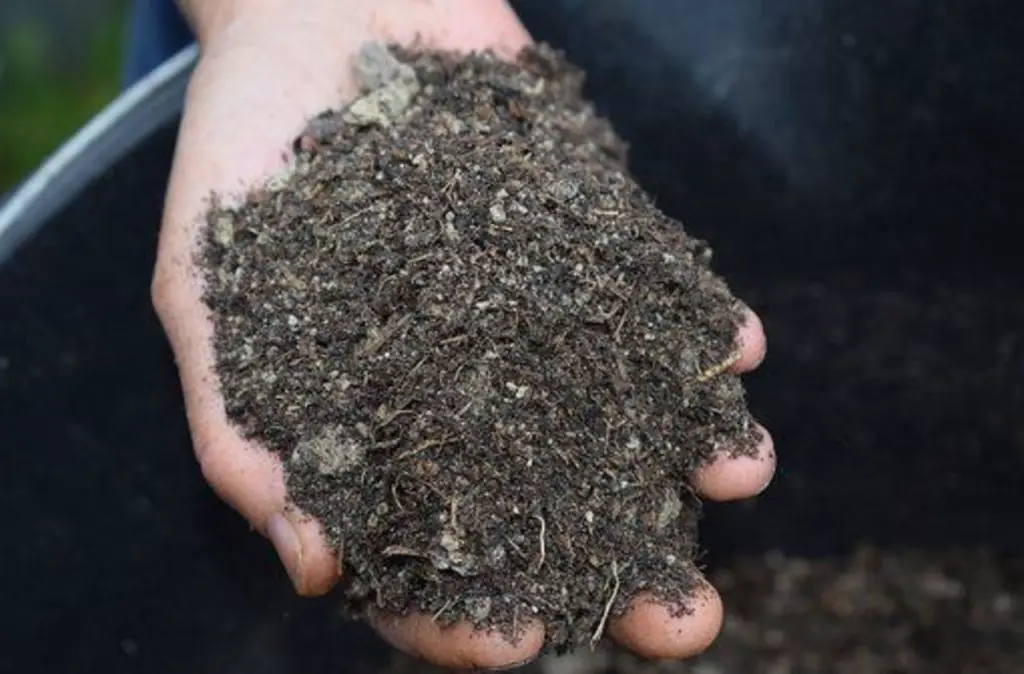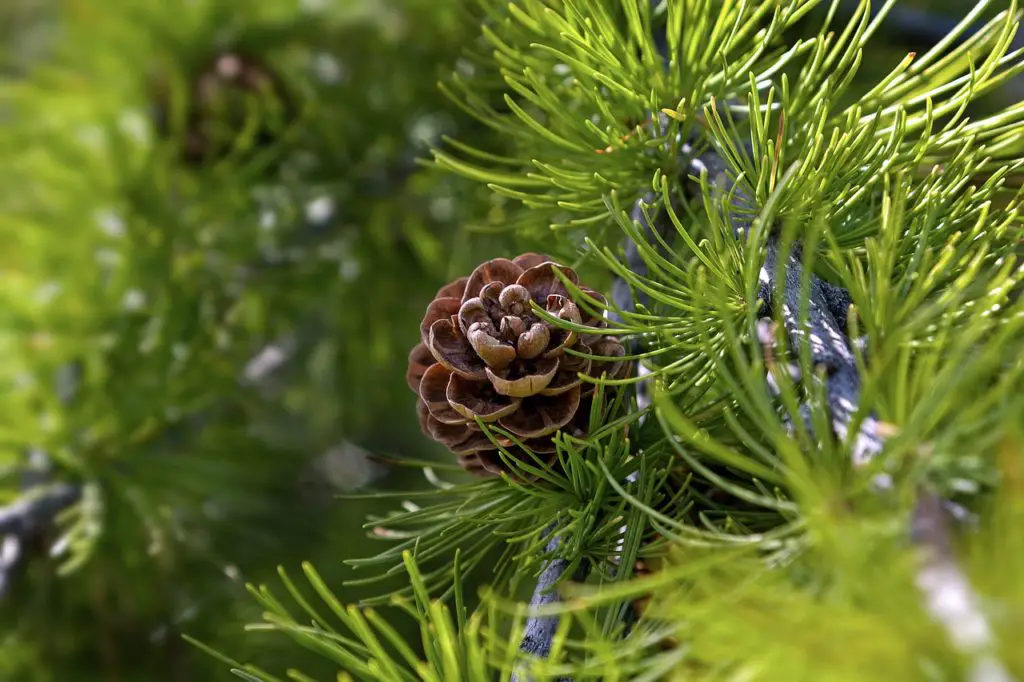Both rubber and wood mulches are great for your garden. Rubber mulch maintains the right soil moisture content and creates an interesting landscape. On the other hand, wood mulch is an excellent protective top-dressing for your soil. But you may think of combining the two in your garden.
So, can you mix rubber mulch with wood mulch?
You can mix rubber mulch with wood mulch. Since the longevity of rubber mulch is shortened by its exposure to direct sunlight, overlay wood mulch to increase it. But, you need to place landscape fabric beneath the rubber to prevent sinking into the soil. Rubber mulch can last for more than 10 years.
This article answers this question comprehensively and also addresses other related ones. Keep reading!
Can You Mix Rubber Mulch With Wood Mulch?
Yes, you can mix rubber mulch with wood mulch in two different ways. The first one is as earlier mentioned, where you overlay rubber mulch with wood mulch to keep it away from direct sunlight. The other way is where you apply rubber mulch on wood mulch to block any growing weed.
How Do You Apply Wood Mulch On Rubber Mulch?
Yes, you apply wood mulch on rubber mulch in FOUR simple and practical steps. By doing that, you prolong the lifespan of your rubber mulch by minimizing the negative impact of the sun on your mulch. Here we go!
Step 1: Remove existing mulch (if any) from your bed and place it on a large piece of plastic. If there are any landscape timbers present, shovel them onto the plastic too.
Step 2: Place your woven landscape fabric onto the well-swept bed and trim it with scissors to fit appropriately. Ensure your fabric is smooth by ‘ironing’ out any wrinkles.
Step 3: Use a spade to put your rubber mulch onto the fabric and spread it evenly using a rake to a depth of 1.5 to 2 inches. Be cautious though, not to damage your fabric.
Step 4: Spread your wood mulch on top of the rubber mulch and spread it using a rake. Ensure that it covers your rubber mulch fully to prevent its direct contact with the sun. Both layers of the mulches should have a depth of around 3 inches.
The other outstanding benefit of this wood-rubber mulch setup is the maintenance of your plants’ health.
The indirect contact between wood mulch and the soil is a great advantage. Why? The wood mulch decomposes over time, which is beneficial to the soil in the long run. Nonetheless, the high carbon concentration in the decomposing matter seeks out nitrogen to enhance the process. As a result, it draws nutrients meant for plant growth from the soil.
How Do You Apply Rubber Mulch On Wood Mulch?
You apply rubber mulch on wood mulch by following the FIVE steps below. When you spread rubber mulch on your wood mulch, it acts like a seal preventing the growth of potential weeds. Here is how.
Step 1: Rake all the large pieces of your old mulch onto a large plastic, leaving behind the decomposed and decomposing mulch. Also, get all the landscape timber onto the same plastic.
Step 2: If it’s a new bed, prepare it and shovel your wood mulch onto it between 2-3 inches and spread it evenly using a rake. If there was existing wood mulch, simply add enough of the new one to a level you can’t see the old one but not beyond.
Step 3: Place your landscape fabric material and trim it using scissors to ensure it fits perfectly well with no folded areas.
Step 4: Apply your rubber mulch on top of the wood mulch of a 3-6 inches thickness and spread it evenly too. Be sure to cover the wood mulch completely.
Step 5: Add about 0.5 to 1 inch of wood mulch to your rubber mulch to prevent direct contact with the sun, which can cause deterioration.
Since the wood mulch is organic, it starts to decay after some time. This may give your garden/bed an ugly sight. Hence, embracing this rubber-wood mixture is an excellent idea. Doing so maintains your wood mulch effectiveness and the good look of your garden and compound.
Also, it’s essential to remove any undecayed wood before applying the rubber layer. The rubber mulch enhances good drainage and moisture retention.
Why Do You Overlay Wood Mulch With Rubber Mulch?
You overlay wood mulch with rubber mulch because the former is more efficient and lasts longer than the latter. Additionally, rubber mulch absorbs less water than wood and thus, it drains water freely to plants. Fertilizers can also get to the soil faster through this mulch for easy absorption by the plants.
Furthermore, rubber mulch on top of the wood mulch keeps the fungi and weeds at bay. That makes this gardening method time and cost-efficient. You don’t have to weed or spray your bed/garden to curb the weed.
What’s more, less care is required because this combination can withstand storms and winds. That isn’t the case with wood mulch alone.
Benefits Of Rubber Mulch Over Wood Mulch
There are various benefits of rubber mulch that make it stand at a higher edge than wood mulch. That’s why using them together makes the wood mulch more effective. Let’s look at the major ones.
- Decomposition: Rubber mulch doesn’t rot and therefore maintains a smart state of your garden and compound. Wood mulch, on the other hand, decomposes over time which may produce a bad smell and an unattractive look to the surrounding.
- Pest control: Wood mulch attracts destructive pests that may be expensive to control and demands extra care. Rubber mulch keeps these insects away and hence, is very helpful when applied to its wood counterpart.
- Plant and soil insulation: Rubber mulch is an excellent insulator during winter. It offers an ideal warm atmosphere for the plants and supplies the necessary moisture for them to survive. Contrastingly, wood mulch competes with the plants for nitrogen due to its high carbon content during decomposition.
- Time and cost efficiency: Rubber mulch saves your time and money. Although it has a higher upfront investment than wood mulch, it’s a one-time investment. It’s an all-weather mulch and requires less care. On the contrary, wood mulch needs a lot of maintenance and annual replacement.
- Environmental friendliness: Using rubber mulch for your plants minimizes the landfills. Since it’s produced from worn-out tires, it has no effect on the surrounding. Wood mulch is made of unwanted timber sourced from the trees.
- Coverage: Rubber mulch provides twice as much coverage as wood mulch. While only 1.5 inches of rubber mulch is required for effective weed control, you need 3 inches of wood mulch for the same.
FAQ
Is Rubber Mulch Better Than Wood?
Yes, rubber mulch is better than wood. Rubber mulch has higher longevity than its wood counterpart. It can last between 10 and 20 years and isn’t prone to breaking.
On the other hand, wood mulch has a short lifespan as it decomposes after a short while. However, the decayed wood mulch increases the soil’s fertility.
Is It Good To Use Rubber Mulch?
Yes, it is good to use rubber mulch. It’s excellent in weed growth inhibition, which is the primary function of mulching. Since this type of mulch is dense and heavy, it prevents light penetration and compresses the soil.
As a result, weed germination and growth are inhibited. Rubber mulch also retains the good look of your compound and garden.
Is Rubber Mulch Heavier Than Wood Mulch?
Yes, rubber much is heavier than wood mulch. For that reason, this mulch has a longer lifespan and isn’t carried away easily like wood mulch. While wood mulch decays with time, rubber mulch can last up to 20 years of use.
Will Rubber Mulch Attract Termites?
No, rubber mulch won’t attract termites. Unlike its wood equivalent, rubber mulch is termite-resistant. Hence, it protects your plants and home from pests such as carpenter ants. This mulch only allows water and fertilizer penetration into the soil.
Can Rubber Mulch And Wood Mulch Stick Together?
Yes, rubber mulch and wood mulch can stick together. That happens when you fail to place a landscaping fabric between your two mulches. The scenario can be devastating because rubber doesn’t decay quickly, causing pollution of your compound. The fabric prevents stickiness but allows the movement of air and water to the soil.
Bottomline
There is no doubt that you can mix rubber mulch with wood mulch for the effective functioning of both. How you combine the two mulches depend on your current need.
This article has discussed the two ways in which you can mix these mulches for your plants to reap maximum benefits from them.
If you aim at preserving your rubber mulch from sunlight damage, applying wood mulch onto the rubber mulch is brilliant. If you intend to cover the ugly look of your decomposing wood mulch, then, spreading a layer of rubber mulch on it is an excellent idea.


